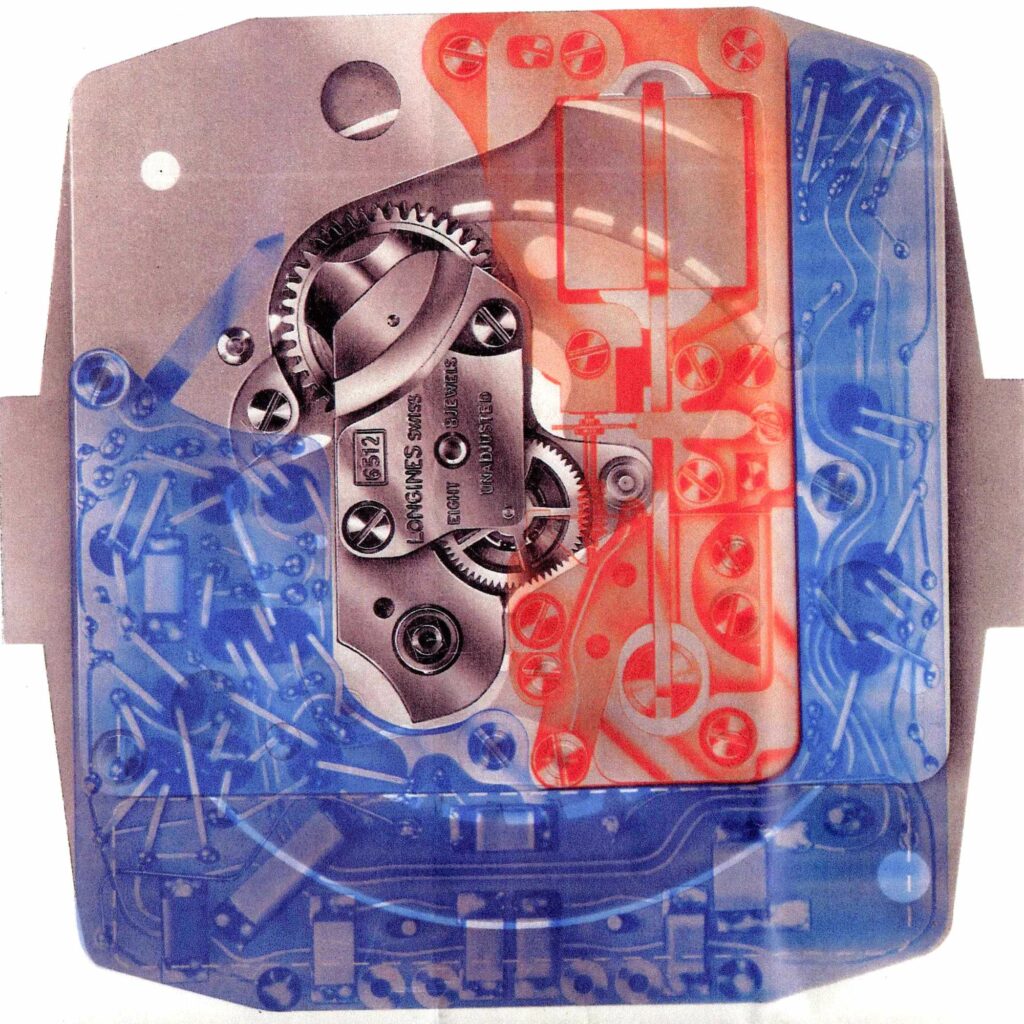Cal. 6512 was the first quartz watch movement announced for production. Used in the Longines Ultra-Quartz models, Cal. 6512 was a “cybernetic” movement which combined aspects of a tuning fork movement with a quartz crystal regulator. This is similar to the CEH Beta 21, which Longines also used in their QuartzChron models, and the Bulova Accuquartz Cal. 224. Cal. 6512 would prove temperamental and many were replaced later in the decade with a common and proven ESA quartz movement.
Longines announced the Ultra-Quartz watch at a press conference on August 20, 1969, making it the first production quartz watch in the world. It predated Seiko’s Astron Cal. 35SQ by four months and was announced eight months before the 1970 Basel Fair, which saw the CEH Beta 21, Girard-Perregaux, and Omega Megaquartz announced. The world’s first quartz watch prototype, the CEH Beta 1, was built in 1967.
Cal. 6512 is a rectangular movement like the Beta 21, measuring 12.25 by 14 ligne (27.80 by 31.80 mm) and was 5.40 mm thick. It contains 8 jewels and includes a date wheel with quick set. Longines claimed over 1 year of power reserve from a single 1.35 volt Union Carbide 343 battery.
The crown is located on the rear of the case, along with the battery compartment. It includes a half-ring which can be raised to allow the crown to be turned. In the first position, the crown quick-sets the date. Pulled out to the second position, it adjusts the hands and causes the seconds to stop.
Lacking integrated circuit technology, Longines used discrete electronic components to build the quartz driver and comparison circuit. 40 electronic elements are used in all, including 14 transistors, 19 resistors, and 7 capacitors. Although complex to construct, this circuit does not draw as much power as the early bi-polar ICs used by the CEH Beta team.
The Ultra-Chron movement has two oscillators linked through a series of electronic components. The wheel train is actuated by an exposed vibrating bar, which vibrates at 170 Hz between two permanent magnets similar to a tuning fork. Each pulse of the motor is compared to the pulses of the quartz rod crystal, which oscillates at 9350 Hz. If they do not line up perfectly, the motor is adjusted to match. This feedback loop is called “cybernetic” by Longines.
Longines the Ultra-Quartz in conjunction with Swiss engineering firm, Bernard Golay SA. It was created by the research and development arm of the company which was separate from the production division. After the announcement, Longines found that the prototype would require much reengineering to produce, and the production division was not eager to work on this “competitive” movement. For this reason, it would take nearly two years for a production Ultra-Quartz watch to be released for sale. This delay allowed the rest of the Swiss, Japanese, and American industry to catch up and surpass the design. In the end, just a few hundred Longines Ultra-Quartz watches would be produced between 1971 and 1974.
